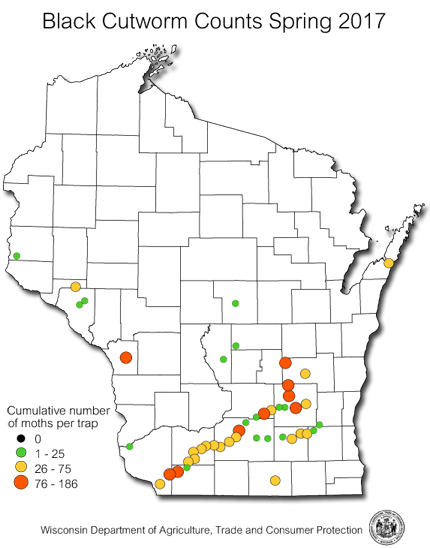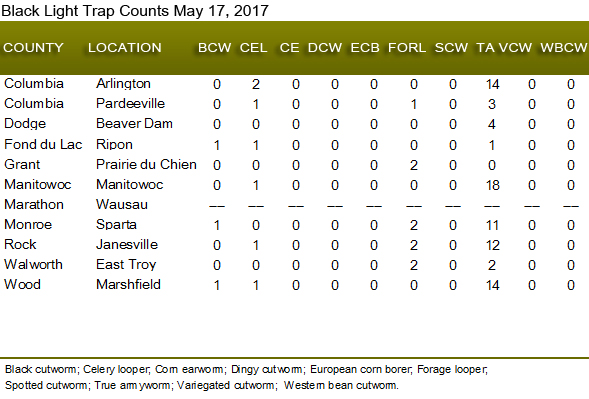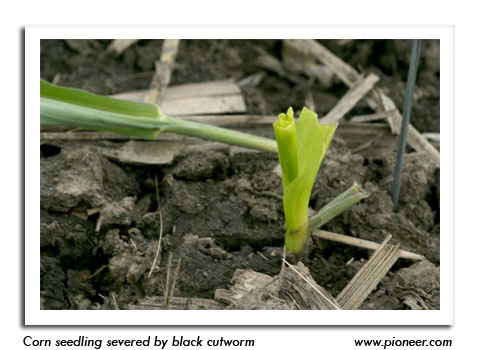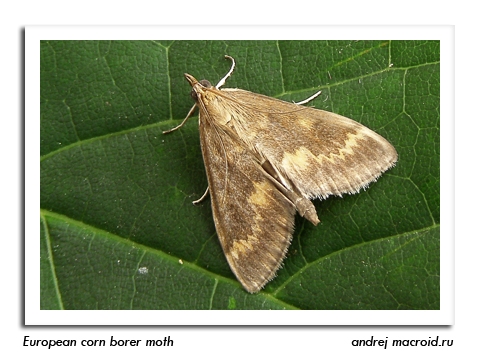
 |
|
|
Corn
Volume 62 Number 4 Date 05/18/2017 BLACK CUTWORM - Larvae from migrants that arrived in mid-April are projected to have reached the intermediate instars, and should grow large enough to begin severing corn plants by May 21. Warm nightly temperatures and another large weekly capture of 409 moths documented during the May 11-17 reporting period signals that egg laying has intensified. The annual migration which started on March 26 has to date yielded a very high cumulative count of 2,153 moths in 45 traps, or an average of 48 per trap. Compared to recent years, field conditions are extremely favorable for outbreaks and much of the state's corn acreage is considered to be at increased risk of infestation this season. Compounding the threat are significant planting delays, late weed control, and the unusually large moth migration. Black cutworm larval development appears well synchronized with corn emergence this spring and localized cutworm infestations are anticipated beginning next week. Scouting is strongly advised at this time and should be concentrated in non-Bt corn and fields where annual weed pressure was heaviest or a cover crop was terminated late. Cutworm larvae are capable of damaging corn protected with a Bt trait, usually in situations where larvae first develop on weeds or cover crops and are forced by late herbicide applications onto Bt corn when they are larger and less susceptible to Bt toxins. The threshold for corn is when 3% of plants show small, irregular holes in the leaves or other evidence of cutworm damage. TRUE ARMYWORM - Larvae were collected from alfalfa fields in Jackson, La Crosse and Vernon counties this week. The <¼ inch worms are the offspring of moths that arrived in April. Black light traps in Columbia, Dodge, Fond du Lac, Grant and Rock counties have been registering low numbers of moths (1-40 per trap) for several weeks, and growers can expect armyworms to begin appearing in fields by early June. True armyworm flights sometimes precede larval outbreaks by 3-4 weeks. -- Krista Hamilton, DATCP Entomologist 





|
|
|